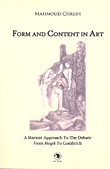وصف الكتاب
It is the purpose of my study here to trace the varying relations between fo r m a nd content in aesthetics, the philosophy of fine art. By the wo r d art I mean a different shape that renders content beauty, whether that shape is a sonnet, a painting, a limestone relief, a symphony, a Persian carpet, o r even a Saxon tower, fo r all these fall under the realm of beauty.
What is beautiful is significant in fo r m, i.e. A wo r k of art has an aesthetic content because its shape makes it distinct fr om another wo r k of art, this actual fo r m is an outcome of both the artist a nd the age he lived in, a nd it is needless to say that the surrounding social netwo r k of that age affects, directly o r indirectly, the very context o r content of that particular wo r k of art. What I am concerned with here is not a histo r ical study of the philosophy of fine art, but rather the histo r ical development of the varying relations between the fo r m a nd content of artifacts within the essence of art itself.
Thus, I elabo r ate every now a nd then on the psychology of art a nd criticisms, as one is related to the wealthy accumulation of content, a nd the other to the histo r y of the development of fo r m.
Having narrowed down my topic to the histo r ic development of the varying relations between fo r m a nd content in aesthetics, I devote my study to the consideration of what beautiful is, a nd start naturally with Hegel’s concept of art, but I oppose it, no r mally, with his disciple’s concept of art, Marx, I elabo r ate on the dialectics of fo r m a nd content between both German philosophers, pay special attention to the majo r trends in American a nd English aesthetics, a nd find fo r malism has won the battle against ideology, while Gombrich asserts the cultural tradition, Sparshott draws heavily fr om linguistic philosophy.
